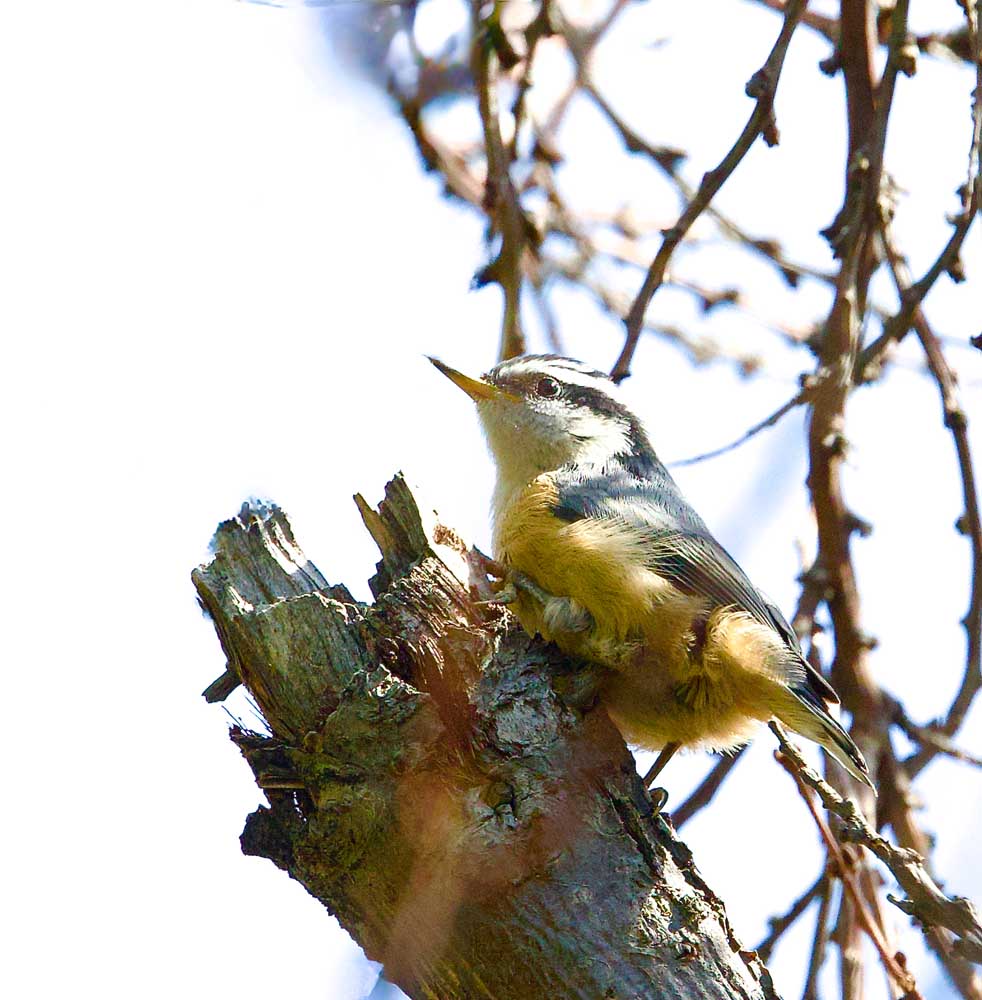Birding: ‘Babies R Us’
Published 10:04 am Wednesday, June 28, 2023

- The red-breasted nuthatch fledgling is patiently waiting for its parent to bring food.
Parent birds are still feeding in their young, but they are bringing them to the feeders now. They still feed them, but the fledglings are also eating seeds for themselves. However, when a parent comes near the mouths go open and the begging begins.
Trending
Recently a pair of black-capped chickadees brought five fledglings to our hanging tray feeder. The babies were content to feed themselves until a parent arrived. Then the squabbles began, mouths opened wide all hoping to be the favored one of the moment and the recipient of a tasty sunflower kernel. Black-capped chickadees will lay six to eight eggs. I can’t even imagine how much more hectic it would be if six, seven or eight were brought to the feeder tray.
The red-breasted nuthatches have been here all week, as well, with their brood of three. Unlike the chickadees, so far, the fledgling nuthatches are content to sit in the tree next to the feeder, mouths open wide waiting for mom and dad to fly in with lunch and dinner. They will soon follow the lead of the chickadees and come to the feeder on their own but will still attempt to entice their parents to provide food.
House sparrow fledglings are also coming to the feeders. Some go to the tray feeders, but most stay on the ground foraging for themselves. However, they also beg for food from nearby parents every chance they get. Both the male and the female house sparrow feed their young. The fledgling house sparrows’ behavior can often be witnessed up to four times a year because the parents may have up to four broods a year. House sparrows are not always welcome or among the most popular birds. For one thing they are messy eaters when at a feeder. They grab seed and fling the ones they don’t want on the ground. They seem to be able to empty a silo feeder in a heartbeat! In addition, they often displace other species like bluebirds or purple martins to take over their nests. However, they do feed on the ground, and this helps keep the area below the feeder a ‘bit’ tidier.
Trending
House finch babies abound as well. They, like the house sparrows are feeding on their own but again like the house sparrows they open their bills wide and flutter their wings whenever a parent is nearby. They have two to three broods between March and August.
Downy woodpecker parents still appear to have nestlings. I am guessing this is the case because they have been coming to the suet every few minutes for several hours at a time every day for a week. The female lands on the suet, fills her beak and flies off to feed her nestlings. As soon as she leaves a male downy lands and fills his beak with suet. As soon as he flies off, the female returns, and the sequence begins again. This has been going on for a while, so it won’t be long before the nestlings fledge. The parents will then start bringing them to feast on the suet for themselves. Suet (non-melting type) has also proven to be attractive for the black-capped chickadees and the red-breasted nuthatch fledglings. Parents fill their bills with suet crumbs and then take off to poke their beak into one of their youngster’s mouths as it sits on a nearby branch. A parent may also just have to turn its head to pop the tasty morsel into the mouth of the begging baby sitting beside it.
My friend, Howard, sent a few photos of a fledgling brown-headed cowbird sitting on a black-tailed deer that was feasting on seed at his tray feeder. It appears to be waiting in anticipation of the arrival of its surrogate parent. It is hoping for a beak filled with protein. Brown-headed cowbirds lay their eggs in other bird’s nests, usually in that of a smaller bird such as the white-crowned sparrow.
So, right now it is “Babies R Us” in our yard! They are exciting to watch and very entertaining. Happy birding!









